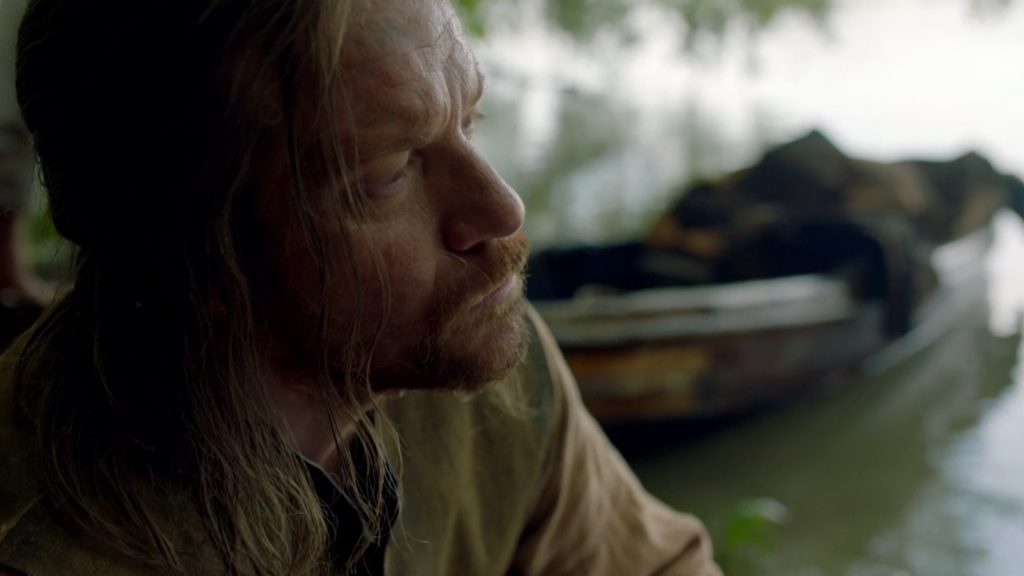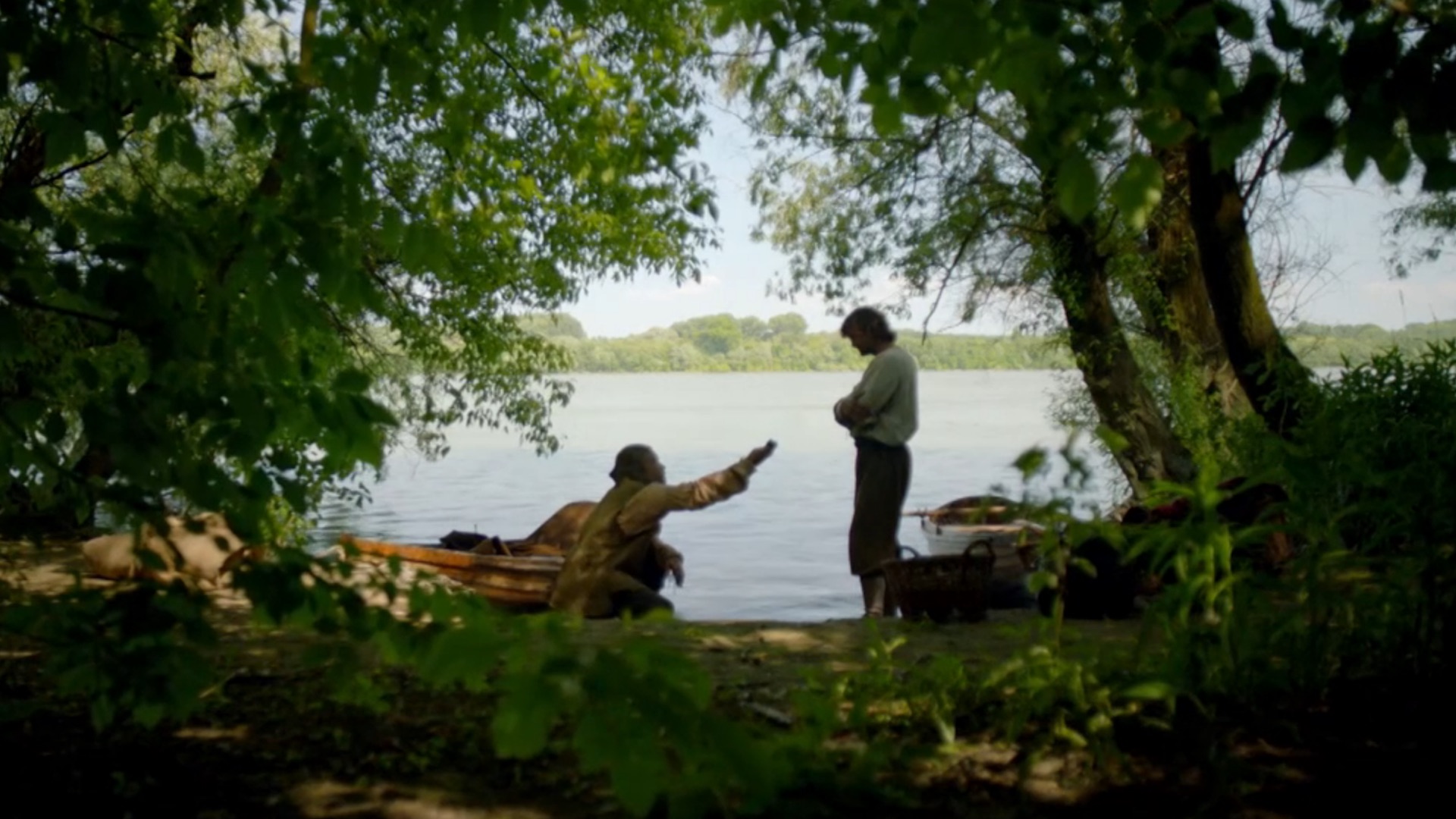
photo by Jamestown
By Jess Bellville
Whether you’re watching the Masterpiece dramedy The Durrells in Corfu or a Secrets of the Dead episode on how cosmic-ray muons are used to map voids in Egyptian pyramids, do you ever find yourself wondering about a certain detail that sends you spiraling down a rabbit hole of related-but-unrelated homespun research?
It goes something like this: Let’s say you’re engrossed in the shenanigans of the Durrell family during their island sojourn on Corfu, when you notice that aspiring photographer Leslie Durrell is wearing a cravat. Then your mind begins to swirl, and one thing leads to another. Like this:
- Were cravats the fashion of the time?
- Why don’t gents of good taste wear cravats now?
- What other forms of men’s neckwear have gone extinct?
- Did 1920s photographers take selfies?
- Answer: They did. With fruit.
Down, down, down the rabbit hole you go. Where you end up, nobody knows!
Last Friday, Masterpiece launched a new, TPT Passport-only show to stream: Jamestown. Chronicling the misadventures of three very different women who travel by ship to the still-new Virginia settlement in 1619, the show just begs you to follow the rabbit holes of your wildest dreams. Each of the women – along with the other literal boat-load of lasses – must marry the man who paid for their passage. Needless to say, drama ensues and tensions come to scalding-hot boiling points. What could possibly go wrong with that scenario?
A lot, dear readers. Oh-so much. You have to watch it to understand it.
But the first episode, alone, sent the PBS Nerd Brain Trust at TPT tumbling down several rabbit holes. Naturally, we could dissect the historical details of the first American settlement in what was then considered the New World (even though several American Indian tribes had lived there for millennia). But that’s too easy. Instead, we investigated two details that begged us to dive deeper on a quest to obtain even more “cocktail party” information.

Rabbit Hole #1: Eating dirt
When mean husband-to-be Henry Sharrow travels by river beyond the safely walled settlement, along with his younger brother Silas, he steps foot on the bank and promptly eats a handful of dirt.
Wait a second! Is that a thing? Do people eat dirt? We understand that desperate times call for desperate measures, but does that also involve putting A HANDFUL OF DIRT IN YOUR MOUTH?
Will dirt sustain you? If dirt could prevent starvation, wouldn’t more people throughout the entire course of human history, have taken to this tactic? And more importantly, wouldn’t we know about it?
The answer is simple: Eating dirt is a thing – and it’s called geophagia, or geophagy, and it’s been a universally common practice for thousands of years. Hippocrates and Pliny both mention the practice in ancient texts – and in the rural South, geophagia was associated with increased sexual prowess for men and easier child delivery for women.
But it has its downsides, namely issues such as hookworm and anemia.
But wait again… Didn’t the human appendix evolve so that early humans could effectively digest grit and small stones? Isn’t it widely considered to be a vestigial organ that we no longer need? Actually no. Real people are still doing real science on the purpose of the appendix – and it’s now thought to be a safehouse for beneficial bacteria.
Wait, what were we talking about again?
 Rabbit Hole #2: Would wolves hunt people?
Rabbit Hole #2: Would wolves hunt people?
Seizing the day – and the opportunity – Verity dons her husband-to-be’s clothes, pins her hair up and leaves Jamestown in search of a boat that will take her far, far away. Without hesitation, her pal, Alice, tracks her down in a woodsy, watery spot and convinces her to return. En route back to the settlement, they encounter a pack of wolves, presumably hungry, that chases them through the trees before surrounding them in a semicircle.
Okay. Hit the pause button. Would wolves prowling in the woods during the Jamestown era have behaved this way?
The answer to that question is complex at best: It depends on the circumstances. While rare, wolf attacks do happen – and they tend to be more common when wolves have adapted to human presence. They will certainly attack when provoked, and they might just stalk someone down if they’ve experienced a period of hunger. So it’s entirely possible that the wolves depicted in Jamestown had adjusted to the sightings of more and more people with each passing year.
In more recent news, many areas in North America have had issues with wolves attacking dogs, which really should come as no surprise considering the fact that their natural habitats shrink more and more every year.
And that issue made us ask another question: How long have dogs, related to wolves, been domesticated? Do wolves recognize dogs as their kin? Before early humans domesticated traditional “farm animals” such as cows or goats – hells bells, even before they invented agriculture – they had befriended dogs, some 14,000 to 15,000 years ago. In that time, dogs developed a unique skill: They learned to make eye contact with people as a way to foster an emotional connection that resulted in better care.
And hey! Taking that one step further, did you know that domesticated dogs, like their human counterparts, exhibit a “left gaze bias,” meaning they scan a human face from left to right, focusing more on the left side because a person’s own right-side facial expressions tend to be easier to read. But they don’t do this when gazing at other animals. And neither do people.
Mind blown.
Now that we’ve taken you on one wild ride down a series of intriguing rabbit holes, we wonder which ones you darted down while watching Jamestown. So we entreat you, fellow PBS Nerds: Take us on an adventure down your rabbit holes! Please, oh please, comment below and share with your rabbit-hole-loving friends.
© Twin Cities Public Television - 2018. All rights reserved.
Read Next




